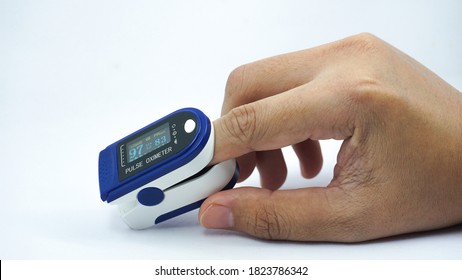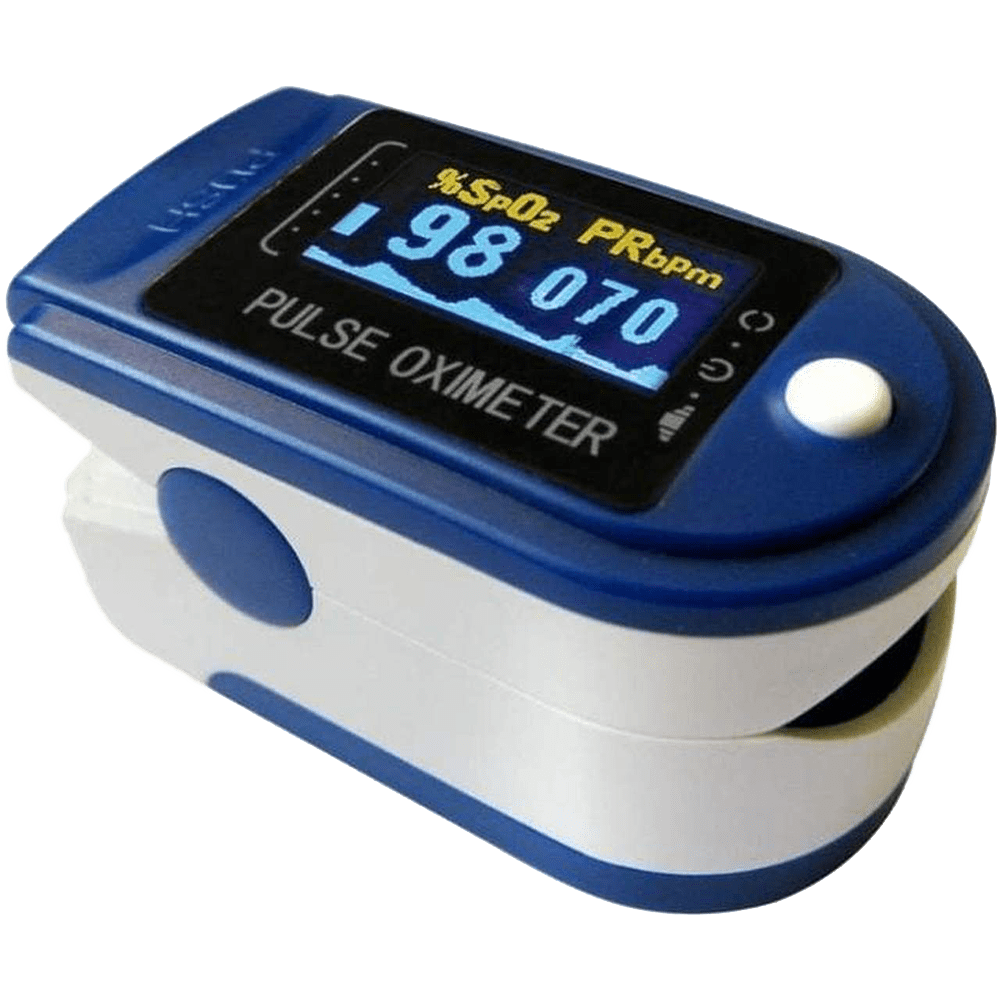- Pulse Oximeter Use
- Pulse Oximeter Used In Hospitals
- Pulse Oximeter Used In Hospitals
- Pulse Oximeter User Manual
- Pulse Oximeter Uses
What is pulse oximetry?
Pulse oximetry is a test used to measure the oxygen level (oxygensaturation) of the blood. It is an easy, painless measure of how welloxygen is being sent to parts of your body furthest from your heart, suchas the arms and legs.
A clip-like device called a probe is placed on a body part, such as afinger or ear lobe. The probe uses light to measure how much oxygen is inthe blood. This information helps the healthcare provider decide if aperson needs extra oxygen.
Why might I need pulse oximetry?
Pulse oximetry may be used to see if there is enough oxygen in the blood.This information is needed in many kinds of situations. It may be used:
A pulse oximeter is an easy-to-use, non-invasive device that helps you monitor your blood oxygen levels and pulse rate in the comfort of your own home. How Does a Pulse Oximeter Work? A pulse oximeter clips painlessly onto your finger. How to use this pulse oximeter Make sure your hand is warm to the touch. Then rest it on your chest for five minutes. Switch the pulse oximeter on. Then attach the clip of the pulse oximeter to the finger next to your thumb, or your middle finger. Watch the numbers on the pulse oximeter.%SpO2 97 PR bpm 60. Pulse oximetery is the measure of oxygen saturation in the blood. This video from Devon Medical Products shows how to use a pulse oximeter. This particular p.
During or after surgery or procedures that use sedation
To see how well lung medicines are working
To check a person’s ability to handle increased activity levels
To see if a ventilator is needed to help with breathing, or to see how well it’s working
To check a person has moments when breathing stops during sleep (sleep apnea)
Pulse oximetry is also used to check the health of a person with anycondition that affects blood oxygen levels, such as:
Your healthcare provider may have other reasons to advise pulse oximetry.
Pulse Oximeter Use

What are the risks of pulse oximetry?
All procedures have some risks. The risks of this procedure may include:
Incorrect reading if the probe falls off the earlobe, toe, or finger
Skin irritation from adhesive on the probe
Your risks may vary depending on your general health and other factors. Askyour healthcare provider which risks apply most to you. Talk with him orher about any concerns you have. Microsoft streets and trips windows 10 download.
How do I get ready for pulse oximetry?
Your healthcare provider will explain the procedure to you. Make sure toask any questions you have about the procedure. If a finger probe is to beused, you may be asked to remove fingernail polish.
Your healthcare provider may have other instructions for getting ready.
What happens during pulse oximetry?
You may have your procedure as an outpatient. This means you go home thesame day. Or it may be done as part of a longer stay in the hospital. Theway the procedure is done may vary. It depends on your condition and yourhealthcare provider's methods. In most cases, pulse oximetry will followthis process:

A clip-like device called a probe will be placed on your finger or earlobe. Or, a probe with sticky adhesive may be placed on your forehead or finger.
The probe may be left on for ongoing monitoring.
Or it may be used to take a single reading. The probe will be removed after the test.
What happens after pulse oximetry?
You can go home after the test, unless you are in the hospital for anotherreason. You may go back to your normal diet and activities as instructed byyour healthcare provider. Your healthcare provider may give you otherinstructions after the procedure.
A pulse oximeter is an easy-to-use, non-invasive device that helps you monitor your blood oxygen levels and pulse rate in the comfort of your own home.
How Does a Pulse Oximeter Work?
A pulse oximeter clips painlessly onto your finger. Inside the pulse oximeter, there is a light source and a light detector. When you hit the button on your pulse oximeter, the device sends red and infrared light through your finger.
Hemoglobin is a protein molecule that exists inside your red blood cells. Hemoglobin carries oxygen and carbon dioxide around the body. The light detector inside the pulse oximeter senses how much red light and how much infrared light is absorbed as the light passes through your finger and your red blood cells.
Oxygenated hemoglobin absorbs more infrared light, while deoxygenated hemoglobin absorbs more red light. The sensor inside a pulse oximeter uses the ratio of red light to infrared light (after the light passes through your finger) to measure your blood oxygen saturation levels.
This sounds complicated, but there is no effort or pain for you and the reading takes only seconds!
Pulse Oximeter Used In Hospitals

Should I Have a Pulse Oximeter?
Pulse oximetry readings may be recommended by your doctor if you have a condition that affects your heart rate or blood oxygen levels, or if you are an athlete who participates in high-intensity exercise (or exercise at high elevations).
Additionally, due to COVID-19, some doctors are recommending that everyone keep a pulse oximeter in their home to keep an eye on their blood oxygen saturation levels. COVID-19 is a respiratory illness and the virus can affect your blood oxygen levels - sometimes causing your blood oxygen levels to drop suddenly.
Pulse Oximeter Used In Hospitals
If you have been diagnosed with COVID-19 or suspect you may have COVID-19, it's a good idea to monitor your blood oxygen levels on a regular basis, even if you are not experiencing symptoms. If you notice a drop in your blood oxygen saturation, contact your doctor immediately for assistance.
Please be aware that normal blood oxygen levels can look different for people depending on your elevation, health conditions, and other factors. Before using your pulse oximeter, talk to your doctor about what normal blood oxygen saturation levels should look like for you.
How Can I Get The Best Reading?

While the pulse oximeter is incredibly easy to use, we do have some tips to help you get the best - and most accurate – measurement possible.
Pulse Oximeter User Manual

- Make sure your hands are clean and dry before using your pulse oximeter.
- Do not take a reading when your hands are cold. When you're cold, your blood flow is impaired, and adequate blood flow is required for an accurate reading.
- Place your finger into the device properly, making sure your finger is straight and fully inserted.
- Do not use your pulse oximeter on fingernails with nail polish or artificial nails. You will not get an accurate reading if the light must pass through nail polish or artificial nails.
- While using your device, hold your hand in a relaxed position below the level of your heart and sit still. Do not walk around with the pulse oximeter on your finger.
- Smoking can cause your blood oxygen level measurements to read artificially high. If you smoke, talk to your doctor about the most accurate way to track your blood oxygen levels.
Pulse Oximeter Uses
Remember to pay attention to your own physical symptoms. If your pulse oximeter is giving you a normal oxygen level reading, but you feel short of breath or like you are having any difficulty breathing, you should contact your doctor for assistance. Do not ignore physical symptoms due to a normal reading.
If you have any questions about your pulse oximeter from Advanced Affordable Hearing, please feel free to give us a call. We are here to help you! Contact us at 1 (800) 804-0434. Alpha cc sims 4 pack.
